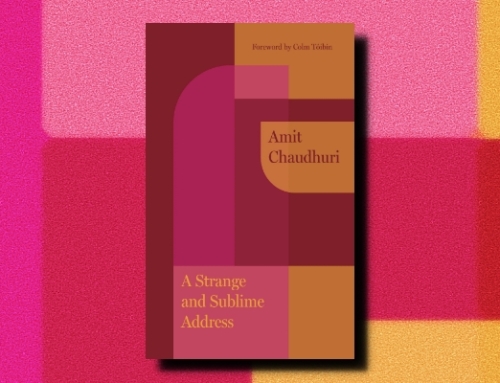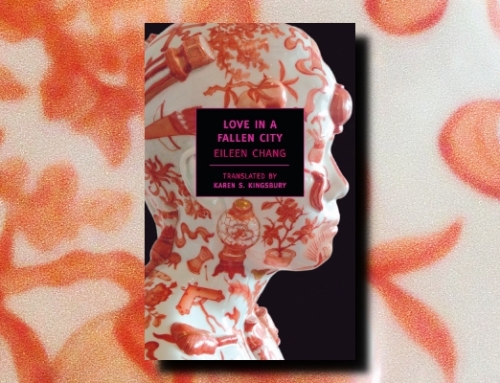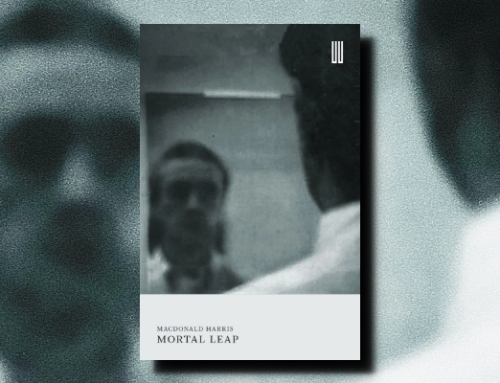Inside by Alix Ohlin (2012) Knopf (2012) 258 pp
Over the past month, Kevin, Kim, and Alison, my fellow Shadow Giller jurors, have been going through the books nominated for this year’s Giller Prize, and I was waiting for the shortlist announcement that came on Monday. It’s finally time I start digging into the Giller Prize shortlist! I do so by reading the only shortlistee that is currently available in the United States, Alix Ohlin’s already-much-talked-about (notoriously) Inside.

I’ll cut to the chase: this is not my kind of book. It looked like it could have been. After all, a review in The Globe and Mail brought up Woody Allen and Ingmar Bergman (here), two of my favorite auteurs whose movies I watch several times a year, but when reading Inside I saw none of that (I mean, not a bit). I started to actively dislike this book early on, so read this review with a grain of salt. Many others really liked it (though, as is well known, not everyone (here)). For example, The Boston Globe has almost the exact opposite view of its characters from me: “keenly observed [. . .] characters so idiosyncratic, ambivalent, and contradictory they could be your family, your neighbors, people you work with” (here). And it is the only Canadian book to find itself on the Giller Prize shortlist and on the Writers’ Trust shortlist. For me, Inside started out well enough but quickly descended into one of those loosely structured montages of people in pain, and we’ve already seen these people and that structure many many times over the years. Inside adds nothing new.
The book opens in Montreal in 1996. Grace Tomlinson is out cross-country skiing one evening when she literally runs into a man who has just tried to hang himself. “Everything will be alright,” she says after she’s called for help. Up to this point he’s been unresponsive, but at that moment he sighs. Grace accompanies the man to the hospital. He doesn’t like her intervention, though he uses her to get out of further questioning from the doctors: “We were skiing together and I told her I was going to kill myself and went off in a different direction. I said I had the rope with me and was going to do it immediately. I took her nine minutes to decide to come after me. Nine minutes! Can you believe that? I timed her.” His name is John Tugwell, and he goes by Tug. By this time we’ve learned that Grace is a therapist, and, going along with his ruse, she can’t leave Tug alone until she’s sure he won’t try to kill himself again. Grace and Tug occupy one thread of the story.
The second thread is only slightly attached to the first. One of Grace’s patients in 1996 is Annie, a young girl who has no sense of self-worth and who cuts herself. In a novel about what’s “inside,” I was surprised that Grace’s first thoughts while she talked to Annie were nevertheless focused on Annie’s potential beauty outside.
The girl wasn’t beautiful yet, but she was going to be. She hadn’t grown into herself or into her body. Her features loomed too large on her face, and blue veins showed through her translucent skin at her temples and chin. Her dirty-blond hair hung thin and lank to her shoulders, and her forehead was covered with small red pimples. In a few years, Grace could imagine, when Annie was taller and learned to sit up straight, when her body grew curves to match her face, she would look like the movie star she so desperately wanted to be.
Now, to be fair, Grace also mentions other reasons Annie might feel better about herself; Annie “got good grades, participated in extracurricular activities, had friends and family who cared for her.” And, when we next meet Annie, it is 2002 in New York, and she’s become that beautiful girl, an aspiring actress who ran away from home and is now trying to make a living without being a cliché (too late!). I understand that on some level the point here is that Annie (or, Anne, as she becomes known when she leaves home) sees her beauty as her main tool rather than any interior qualities she may possess, and that then gets exploited by television, but that all gets a bit muddied as the book goes on and other threads develop in their various directions and to their various points where “inside” means many different things.
In the third thread we are in 2006, and we officially meet Mitch, Grace’s ex-husband, and a fellow therapist. Their marriage began to fall apart when she caught him masturbating to a porn magazine. In that passage we get the first of a long series of unnatural yet still somehow clichéd quips where it seems Ohlin is speaking and not the character: Mitch retorts, “No. The most disturbing part is that I feel more emotionally connected to the girls in those pictures than I do to you.” It’s a therapist’s line, but is it really what Mitch would say? Furthermore, the Mitch we come to know doesn’t seem suited to say such a line, even if it were true. He’s not that in to analyzing himself, see, and he’s constantly avoiding situations where his self-loathing might get the better of him. In 2006, it’s been over a decade since the divorce, and Mitch and we see many more reasons why Mitch despises himself. Avoidance being his main game, he has just run away from a relatively good relationship with Martine under the pretext of going to help the Inuit people in Iqaluit, above the Arctic Circle: “They don’t have enough health care up there to serve the native population,” he said. “They need help. They need me.” This avoidance strategy leads to another of the many tragedies in the book when one of his young patients commits suicide.
 I have read this before, many many times, done both better and worse: Grace, the therapist who seemingly has it altogether in the chair but whose private life is a mess (and here we get a bonus: Mitch, a second cliché therapist); Anne, the aspiring actress with the shaky past who distances herself from others and uses beauty to survive; Tug, the man with a hard surface but, as we see thanks to Grace’s perseverance, it turns out he became that way due to the atrocities he witnessed in Rwanda; oh, and Tug calls Grace “Florence Nightingale” — since there’s a syndrome named just that we know where this is going. These characters have been through it all, and — consequently? — sound like many other characters we encounter in “poignant” contemporary fiction.
I have read this before, many many times, done both better and worse: Grace, the therapist who seemingly has it altogether in the chair but whose private life is a mess (and here we get a bonus: Mitch, a second cliché therapist); Anne, the aspiring actress with the shaky past who distances herself from others and uses beauty to survive; Tug, the man with a hard surface but, as we see thanks to Grace’s perseverance, it turns out he became that way due to the atrocities he witnessed in Rwanda; oh, and Tug calls Grace “Florence Nightingale” — since there’s a syndrome named just that we know where this is going. These characters have been through it all, and — consequently? — sound like many other characters we encounter in “poignant” contemporary fiction.
Besides the re-wrapped characters, the need to be “poignant” — or, at least, the way Inside goes about it — really began to irk me. The book throws a lot at us — death (multiple), rape (multiple), suicide (multiple), teenage pregnancy (multiple), car wreck (multiple) — but it seems to me that the book assumes the mere presence of these genuinely horrific realities of human existence is enough to prop this book up as an important piece of collective introspection; just put this in the book and you’ve successfully incorporated pain and suffering by reference. In contrast, look at Alice Munro, who most often deals with a significant “event” in one sentence and then manages to deal — with language and structure — with what’s really going on inside, complete with nuance and enough poignancy to make the reader sit in silence for the rest of the day. In Inside, the event itself is meant to signify importance. Now, it’s not that these events are not important, significant, poignant in real life or that they shouldn’t be examined in literature. On the contrary. But to me, when fiction presents them as stand-alone evidence of importance I sniff exploitation and manipulation. I know that’s not the intent here, but when this is the technique it is hard to avoid. It got worse when it felt to me like the characters started serving the loose plot, which became more and more deliberate in its attempts to make the reader gasp (I can think of no other reason Anne’s thread was kept in the final draft). Fiction must do more.
Of course, Inside attempts to do more. The message is meaningful, if again a well worn: “Life is painful — and beautiful.” It goes about this by presenting the painful moments people keep secretly locked inside of them. Sadly, so pleased is it by its artificial poignancy, so reliant is it on its stock characters, it fails to get past the surface.








[…] a number of excerpts here. The following are the opening paragraphs from his review (full review is here). I wasn’t as down on the book as Trevor was (my review is here) but neither was I […]
Annie’s story is particularly vexing. What kind of therapist even focuses on potential beauty? It’s superficial; even if Annie were beautiful, that isn’t her real problem. I also have a hard time believing how her story progresses. It seems too convenient, and in my opinion, rather done.
Yes. Annie’s story, besides not really tying into the book as a whole, was a particular pet peeve for me. Obviously, we’ve read it many times before. Moving away from that, though, strangely we don’t even really know all of Grace’s advise or thoughts on Annie because the plot takes over. We are introduced to these issues and then another issue comes along (pregnancy), then another (abortion), then another (her parents), then she’s in New York and beautiful another issue (she lets a stranger in her house), another (stranger has a boyfriend who wants to stay too), another (pregnancy), another (parents — only this time, it’s the stranger’s aunt, who happens to be . . . her boyfriend’s dad! — gasp!). Annie’s story continues on, drifting further and further from the original point where it was anchored to the others’. Any issues it brings up, it deals with in a cursory manner before moving on to others, forever showing that life is hard but, maybe, worth it still.
I had the same problem with Annie that you did. We learn enough about her to see that she is a potentially interesting character, but, as you point out, the author simply lays on one crisis after another without developing the character. Most annoying for me was that her story bears no relation at all to either Grace’s or Mitch’s.
Now I’m a lot less interested… Thanks!I suspect I might have a similar reaction to the book
This is my kind of novel, but I was surprised to see it on the shortlist; there is so much interior action that it doesn’t necessarily have an immediate appeal, with its success largely hinging on whether the readers actually want to spend time in the insides of these characters. (You’re obviously amongst those who’d rather not! Heheh)
I hope it wasn’t just an unwillingness on my part to dwell inside these characters, BIP, but I guess it could be. That isn’t a general problem I feel I have, though. My problem, though, is what I say above. I don’t feel we get inside these characters but rather dwell on the surface. Events and stereotypes provide an illusion of more.
Many may say that William Giraldi was harsh in his NYT review, but for the life of me, unless you’re a reader who is “bamboozled by bad writing”, I can’t imagine what’s to like. Given its title, I would have expected less superficial descriptions of the characters, not to mention that the writing around them is bland and uninventive.
I find this nomination an insult to some of the great Canadian writers who have won the Giller, like Michael Ondaatje. There simply is NO COMPARISON.
[…] my response to Alix Ohlin’s Inside (here), I was wary to continue my Giller shortlist reading. None of the five books is one I would have […]